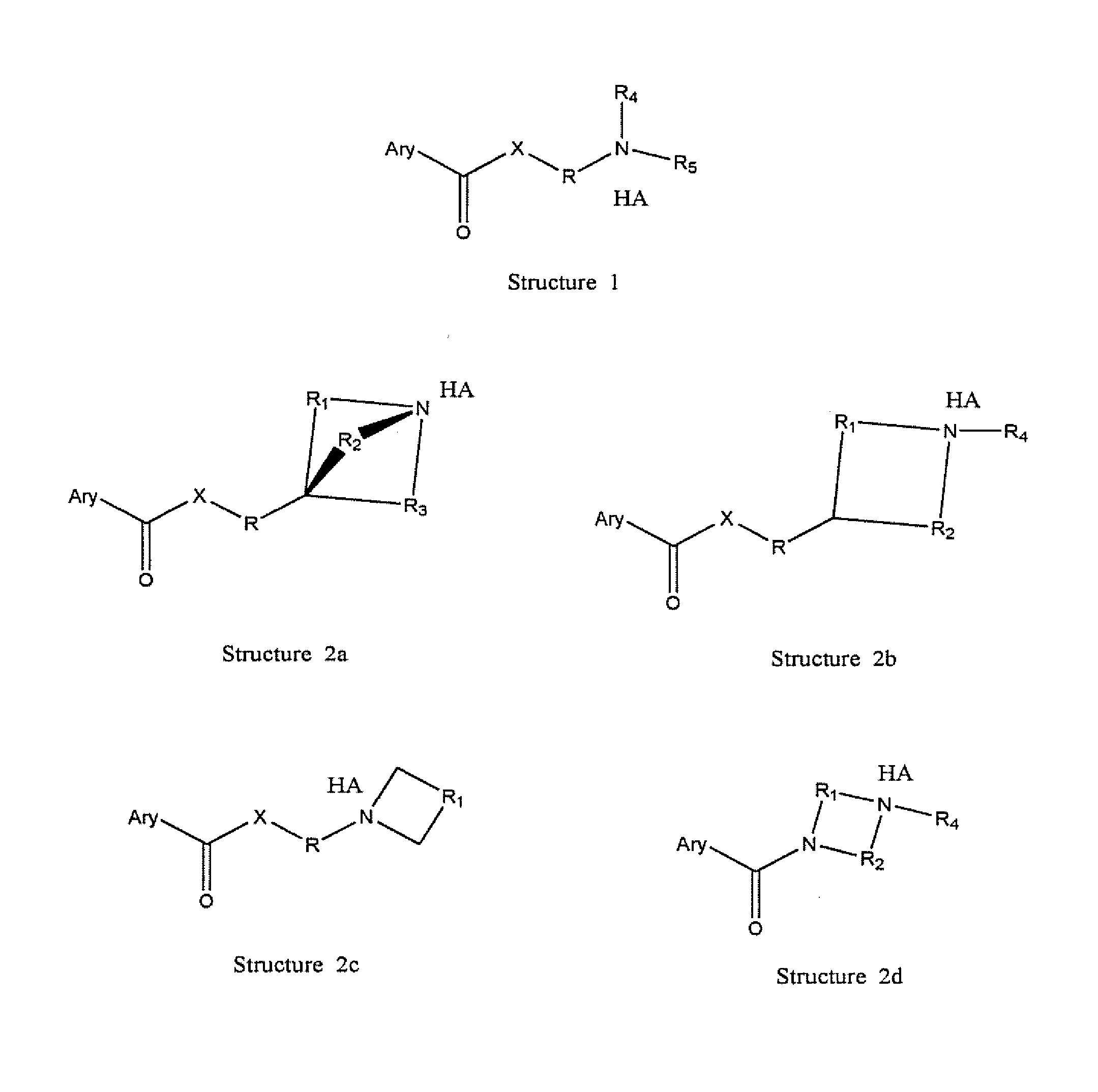Pro-drugs of nsaias with very high skin and membranes penetration rates and their new medicinal uses
a technology of nsaias and nsaias, which is applied in the direction of drug compositions, immunological disorders, metabolism disorders, etc., can solve the problems of difficult, however, to deliver nsaias therapeutically effective plasma levels into the host, and achieve low pharmacologic effects, high potency, and high penetration rate.
- Summary
- Abstract
- Description
- Claims
- Application Information
AI Technical Summary
Benefits of technology
Problems solved by technology
Method used
Image
Examples
Embodiment Construction
Preparation of 1-piperidinepropyl 2[(2,6-dichlorophenyl)amino]benzene acetate.AcOH
[0062]31.8 g (0.1 mol) of sodium 2[(2,6-dichlorophenyl)amino] benzene acetate was suspended in 180 ml of chloroform. 28.6 g (0.1 mol) of 1-piperidinepropyl bromide.HBr was added into the mixture and the mixture was stirred for 5 hours at RT. The mixture is washed with 5% Na2CO3 (1×300 ml) and water (3×100 ml). The mixture is dried over anhydrous Na2SO4. Sodium sulfate was removed by filtration and washed with chloroform (3×50 ml). 6 g of acetic acid was added into the solution. The solution is concentrated in vacuo to 100 ml. Then 300 ml of hexane was added into the solution. The solid product was collected by filtration and washed with hexane (3×100 ml). After drying, it yielded 40 g of the desired product (86%). Elementary analysis: C24H30Cl2N2O4; MW: 481.43 Calculated % C, 59.88; H, 6.28; Cl, 14.73; N, 5.82; O, 13.29. Found % C, 59.83; H, 6.32; Cl, 14.71; N, 5.79; O, 13.35.
Preparation of 3-piperidin...
PUM
 Login to View More
Login to View More Abstract
Description
Claims
Application Information
 Login to View More
Login to View More - R&D
- Intellectual Property
- Life Sciences
- Materials
- Tech Scout
- Unparalleled Data Quality
- Higher Quality Content
- 60% Fewer Hallucinations
Browse by: Latest US Patents, China's latest patents, Technical Efficacy Thesaurus, Application Domain, Technology Topic, Popular Technical Reports.
© 2025 PatSnap. All rights reserved.Legal|Privacy policy|Modern Slavery Act Transparency Statement|Sitemap|About US| Contact US: help@patsnap.com



